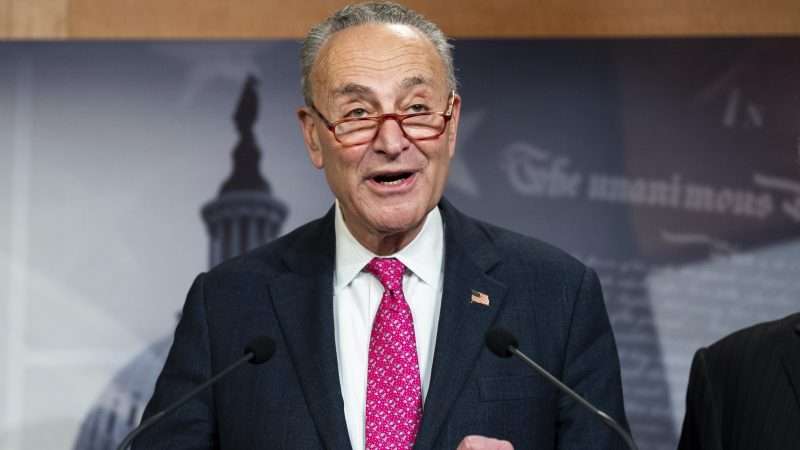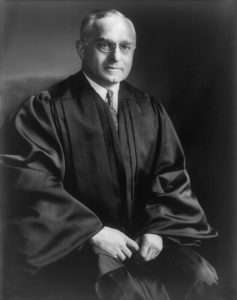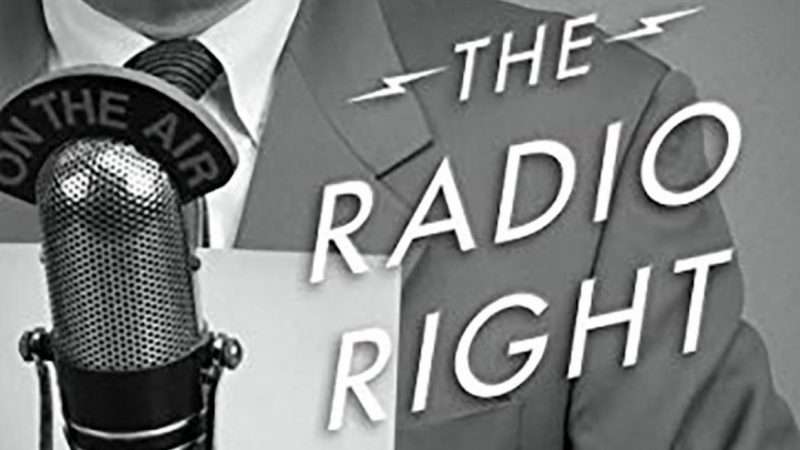After Twitter permanently suspended Donald Trump’s account, conservative interest in mandating online platform neutrality spiked. Meanwhile, progressives alarmed by the Capitol riot called for reviving the Fairness Doctrine to combat the misinformation circulating about the election. The national mood has never been more favorable for some kind of government regulation of the internet.
The Fairness Doctrine hasn’t been active policy at the Federal Communications Commission (FCC) since the 1980s, so public knowledge of the doctrine is hazy at best. But the more you learn about the actual history of the Fairness Doctrine and its antecedents, the clearer it becomes that applying similar regulations to the internet would be a mistake.
When many people hear the phrase “Fairness Doctrine,” they picture a time at some indeterminate point in the past when broadcast media were reasonable and balanced. Back then, they imagine, radio and television station owners couldn’t air only their own opinions and spread unchecked misinformation; they had to let the other side on any given hot-button issue have a say, allowing the “good guys” to act as a check on the “bad guys” and their lies.
That narrative is almost entirely a myth. Despite its evocative name, the Fairness Doctrine was primarily a tool wielded by established political interests to suppress unwelcome speech.
The true story of the Fairness Doctrine begins long before the first major implementation of the doctrine in 1963, back before the rule was enacted in 1949, back all the way to the Radio Act of 1927. That law created the FCC’s precursor, the Federal Radio Commission (FRC), and gave it the power to license and limit radio stations. Among other things, the law required licensees to promote “the public interest, convenience, and necessity” and not simply to serve their own interests.
Does that sound vague to you? It certainly did to station owners in the 1920s and ’30s. Whose convenience are we talking about? What content is necessary and what is not? Is there even such a thing as a singular public interest? The inherent ambiguity also meant incredible opportunities for graft and political privilege. In practice, the more political connections and capital you possessed, the more “public interest” your license application had. The commission maintained a revolving door with the major radio networks, and the networks quickly consolidated what had been a relatively diverse and independent radio landscape.
Non-WASPs and political radicals in particular faced an uphill battle when applying for station licenses. In 1928, for example, the FRC attempted to reassign the license for the leftist Queens station WEVD, named after the socialist leader Eugene Victor Debs. It took a major public pressure campaign to convince the agency that the station showed “due regard for the opinions of others,” which was necessary given that they were “the mouthpiece of a substantial political or religious minority” and thus not naturally deserving of a broadcast voice. Of course, non-socialist stations never had to show a similar “due regard”; it was taken for granted that they represented the public interest.
Similarly, in 1933 the FRC decided that two stations in Chicago—WIBO and WPCC, which served a predominantly immigrant audience—should lose their licenses to a new station, WJKS, because the latter’s programming was better “designed to meet the needs of the foreign population.” By what standard? Well, WJKS promised to air programming that “stress[ed] loyalty to the community and the Nation” and taught “American ideals and responsibilities.” The FRC had decided that the public interest was synonymous with ethno-nationalist self-interest, the 1930s regulatory version of an “English only” sign.
Federal regulation ensured that radio broadcasting in the 1930s became less diverse, less weird, less independent, more corporate, more anodyne, and more centralized. Even actress and comedian Mae West was barred from the airwaves for 13 years after she dared to utter this shocking obscenity in a 1937 radio sketch: “Come on home with me, honey. I’ll let you play in my wood pile.” Thank goodness the government was there to protect the public interest against mild innuendo!
The commission’s crackdown did not go unchallenged. Take “Fightin’ Bob” Shuler, a muckraking fundamentalist pastor from Los Angeles who used his platform to expose local politicians and businessmen for their involvement in one of the largest financial frauds to that point in U.S. history, the Julian Petroleum scandal. His enemies retaliated by asking the FRC not to renew his license, and the commission proceeded to revoke his right to broadcast. Shuler sued, claiming a violation of his free speech rights.
The case, Trinity Methodist Church South v. Federal Radio Commission (1932), made its way to a federal circuit court, which denied Shuler’s claim and, more importantly, upheld the FRC’s power to license or deny stations on the basis of the content of their speech. All subsequent jurisprudence on broadcast speech regulation hinged on this and a handful of other cases from the time.
There’s a vital contrast between what was happening with First Amendment claims in broadcasting versus developments in print media. Just a year prior to Shuler’s case, the U.S. Supreme Court had ruled in Near v. Minnesota (1931) that prior restraint on newspapers by state governments was censorship. As a result, two radically different media regimes emerged: Print speech got ever firmer and clearer protections, while radio speech received distinctly second-class status. The FCC could freely grant or pull licenses based on whether it believed a station’s speech fit within “the public interest,” which in turn meant whatever a small group of industry lobbyists, political flunkies, and communications lawyers managed to form a consensus about.
How did the government get away with denying broadcasters full free speech rights? When challenged in cases like Trinity, they appealed to something called the “scarcity rationale.” Since the electromagnetic spectrum is physically finite, they argued, the First Amendment shouldn’t apply to radio. The government needed to choose winners and losers, because someone had to decide who got a license and who did not.
This was always a convenient legal fiction, if for no other reason than because the FCC has never hit the technical limit on the number of possible broadcast stations, either then or now. To the extent that there was scarcity on the airwaves, it was artificially imposed by the FCC itself. By limiting the number of stations, the agency protected powerful media companies from competition, as when it delayed regulatory approval for FM radio because of lobbying by businesses heavily invested in AM broadcasting. Nevertheless, the courts bought the scarcity rationale excuse until the 1990s.
Thus, a readily corruptible government agency with a sweeping but ambiguous mandate had authority over the airwaves. Politicians quickly discerned an opportunity to manipulate the regulators for political advantage. President Franklin Delano Roosevelt, for example, had little tolerance for those who questioned the New Deal. Some of his most vociferous opponents were conservative newspaper owners, who were increasingly critical after Roosevelt’s Supreme Court–packing scheme in 1937. Now, Roosevelt couldn’t go after them directly, thanks to that pesky First Amendment, but many of these newspapermen had begun to buy radio stations, and in that arena FDR could target them for special regulatory attention.
As one former commissioner put it, Roosevelt “put the blow torch” on his FCC chairman, Larry Fly, to use various regulations to shut down the president’s enemies. Among other measures, Fly proposed a cross-media ownership ban; it ultimately failed but it still tied up newspaper acquisition of FM licenses for several years. (President Richard Nixon’s FCC would ultimately enact a cross-media ownership ban in an attempt to intimidate the owner of The Washington Post into easing up on the paper’s Watergate reporting.)
Fly’s most lasting legacy was the Mayflower Doctrine, a direct precursor of the Fairness Doctrine. In the 1941 Mayflower decision, the FCC ruled that a station that had “editorialized” by criticizing FDR would lose its license to a disgruntled former employee. “A truly free radio,” Fly wrote, “cannot be used to advocate the causes of the licensee. It cannot be used to the support of principles he happens to regard most favorably. In brief, the broadcaster cannot be an advocate.” Well, then.
The radio industry pushed back, and in 1949 the FCC backed away from the ban on editorializing. But it kept a crucial component, which was that licensees operated “under an obligation to insure that opposing points of view will also be presented.” This 1949 statement was the basis of the Fairness Doctrine. But the Fairness Doctrine remained notional from 1949 to 1963, with relatively little attempt to exercise the vast powers the FCC had claimed for itself—certainly nothing as extensive as its efforts during the 1930s. Yet something big was changing in the broadcasting industry, something with enormous consequences for regulatory policy.
After World War II, the major networks, which had controlled 95 percent of all radio stations in America in 1945, shifted their attention and capital investment to television. By 1952, fewer than half of radio stations were network affiliates, a ratio that continued to fall through the rest of the decade. Most new radio licenses during this period were going to small-timers—say, a local car dealer who wanted a station to advertise his business. Finances were tight for these independent stations, so the owners were open to selling timeslots to groups the networks wouldn’t have given the time of day to.
That included a new generation of right-wing broadcasters, who (mostly unfairly) attacked liberals and Democrats as unpatriotic Communist sympathizers. After President John F. Kennedy’s election in 1960, he became a particular target of these broadcasters, who went after everything from his mishandling of the Bay of Pigs invasion to his proposed Nuclear Test Ban Treaty.
This Radio Right emerged rapidly. The biggest of them, a fundamentalist minister from New Jersey named Carl McIntire, could be heard on just two radio stations in 1956; by 1963, he was on more than 460 outlets. His estimated weekly audience was 20 million people—about as many as Rush Limbaugh reached 40 years later.
JFK, who had narrowly won in 1960, wanted these irritants quashed. His brother, Attorney General Robert F. Kennedy, concocted a detailed plan for doing so with the help of Walter and Victor Reuther, executives with the United Automobile Workers. Their plan, later nicknamed the “Reuther Memorandum,” had many moving parts, but the two most significant involved the Internal Revenue Service and the Federal Communications Commission. The tax agency, though a program called the “Ideological Organizations Project,” would target right-wing broadcasters for audits in order to dry up the flow of small-dollar listener donations they used to buy airtime. Meanwhile, the FCC would use the Fairness Doctrine to pressure stations not to sell airtime to the offending broadcasters.
In 1963, JFK told his newly appointed FCC chief, Bill Henry, “It is important that stations be kept fair.” Henry listened. One of his first official acts as chairman was to issue a clarification of the Fairness Doctrine that promised a new push for enforcement. The statement singled out only examples of conservative speech that needed balancing by liberal voices, and not vice versa.
Enforcement hinged on members of the public filing Fairness Doctrine complaints with the commission. At license renewal time, the FCC would consider the quantity and quality of Fairness Doctrine complaints. Losing a license—which was rare in this period—was the death penalty for a radio station. But even if a station didn’t lose its license, it would have to bear the expense of hiring legal counsel to fight the complaints and extra staff to prove compliance.
Henry’s most useful tool in enhancing the Fairness Doctrine was a complementary rule known as the Cullman Doctrine, which stipulated that response time claimed under the Fairness Doctrine should be provided for free if the respondents said they couldn’t afford to pay. (Unsurprisingly, nobody ever said they could pay.) This made direct criticism of public figures and administration policies an expensive proposition for the station owners, who responded by ditching conservative broadcasters known for making attacks.
Here is one example of how the Kennedy administration weaponized the Fairness Doctrine. In 1963, JFK negotiated the Nuclear Test Ban Treaty with the Soviet Union. He planned to make it the centerpiece of his re-election bid. The Radio Right attacked it ceaselessly during the summer of ’63. This mattered, because Kennedy needed two-thirds of the Senate for treaty ratification.
So the White House secretly organized a front organization—the Citizens Committee for a Nuclear Test Ban—to threaten stations that aired conservative criticisms of the treaty with Fairness Doctrine complaints unless they were given free response time. The plan was a success, hundreds of hours of free pro-treaty airtime was secured, and the treaty passed by a comfortable margin.
Kennedy was killed shortly thereafter, but the Democratic National Committee picked up the Fairness Doctrine baton. It secretly organized a pressure campaign—complete with its own front organization—to extract free airtime for Lyndon Johnson’s 1964 presidential campaign. Thousands of hours of free airtime were secured, but as the party’s operatives reported after the election, even “more important than the free radio time…was the effectiveness of this operation in inhibiting the political activity of these Right Wing broadcasts.” Stations dropped conservative programming en masse.
When the U.S. Supreme Court validated the Fairness Doctrine in Red Lion Broadcasting Co. v. FCC (1969), it did so unaware that the Democratic National Committee had secretly sponsored the original complainant, feeding him opposition research and even paying for his health insurance. By this time, President Nixon was wielding the Fairness Doctrine against the left.
Conservative radio didn’t make a comeback until relatively laissez-faire commissioners appointed by President Jimmy Carter (the true Great Deregulator) stopped rigorously enforcing the Fairness Doctrine. Ronald Reagan’s FCC ended the rule in 1987, and Reagan vetoed a bi-partisan bill to reinstate it.
We are fortunate that Congress and the courts decided in the 1990s to regulate the internet under a print regulatory regime rather than a broadcast regime. As a result, the internet was “born free,” to borrow a phrase from Adam Thierer. For example, when Congress codified Section 230 of the Communications Decency Act, it extended to the internet a set of legal precedents that had protected bookstores from publisher liability.
And thank goodness they did! Imagine how disastrous a Fairness Doctrine for the internet would be, if outlets and platforms had an affirmative obligation to ensure that either articles published or user posts permitted were carefully balanced according to some ambiguous public interest standard. Think of the mischief that, say, President Donald Trump could have done under a Fairness Doctrine-style regime. The Trump reelection campaign—or some ostensibly independent PAC—could have forced outlets to run a response to any criticism of the administration.
The Fairness Doctrine as originally conceived would not pass legal muster for cable broadcasting or the internet. But there have been proposals for Fairness Doctrine–style regulations that would make an end-run around First Amendment protections by targeting Section 230’s liability waiver. For instance, in 2019 Sen. Josh Hawley (R-Mo.) introduced a bill that would have given the Federal Trade Commission the power to certify that social media platforms are politically neutral with their content moderation policies; decertification would have exposed companies to significant legal liability. Hawley’s legislation was laughed off at the time, but just last October several Senate Republicans, including Lindsey Graham, introduced a bill that would make platforms liable for their moderation of political speech.
These approaches might not pass First Amendment muster. But even if they ultimately failed in court, that would still mean years of messy legal challenges with significant chilling effects on online speech and innovation.
Despite its name, the Fairness Doctrine was deeply unfair. It made broadcasting less diverse, more beholden to powerful corporate interests, and more susceptible to political abuse. And it was a key weapon in one of the most successful censorship campaigns in American history. It would be a mistake of historic proportions to mimic it while writing regulations for the internet.

from Latest – Reason.com https://ift.tt/2Mbpxsm
via IFTTT



